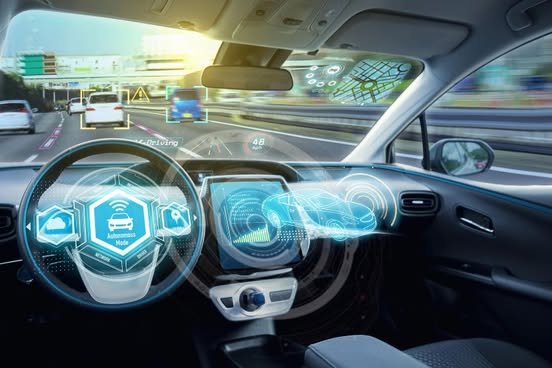Technology has transformed vehicle inspections and improved safety, accuracy, and efficiency. Modern vehicle inspections have evolved to be far more sophisticated than conventional approaches with improvements in diagnostics, automation, and digital tools. We investigate the several ways in which technology is changing vehicle inspections below.
The Role of Technology in Modern Vehicle Inspections
Advanced Diagnostic Tools for Precision Analysis
Present day cars have sophisticated digital systems and sensors that need advanced diagnostic gear for proper inspection. The mainstay of vehicle inspections and onboard diagnostics (OBD) structures permit technicians access to actual-time statistics on the engine, gearbox, emissions, and other crucial components.
These instruments help inspectors find problems with exact accuracy, lessening the need for subjective assessments and manual inspections. For example, OBD-II scanners can immediately identify fault codes, offering information on issues including engine misfires, emissions control failures or gearbox faults. This technical advance guarantees correct diagnosis of problems and quick resolution of them. To get the vehicle safety certificate, just search MOT Stations near me, book your MOT and go through the examination process.
Automation and AI-Powered Inspections
By lowering human error and raising efficiency, artificial intelligence (AI) and automation are transforming vehicle inspections. By examining data from cameras and sensors, AI-powered systems can find possible problems, including fluid leaks, brake pad thickness, or tyre wear.
Using robotics and machine vision, automated inspection stations complete thorough checks in a fraction of the time needed by hand approaches. For fleet management, where quickly and precisely inspecting several vehicles is vital, these systems are especially useful. Predictive maintenance, made possible by artificial intelligence’s capacity to learn from data, allows car owners to solve problems before they become major ones.
Enhanced Safety Through Sensor Integration
Many sensors included in modern cars track their performance and safety constantly. During inspections, these sensors are quite important since they provide thorough knowledge on the state of the vehicle. Tire pressure monitoring systems (TPMS) notify inspectors to underinflated or overinflated tires, guaranteeing ideal safety and fuel economy.
Furthermore valuable data during inspections comes from sensors linked with lane-keeping assist, adaptive cruise control, and braking systems. Using this data helps inspectors to make sure these safety elements are operating as they should, thus lowering the risk of mechanical failures causing accidents.
Digital Platforms for Streamlined Documentation
The digitisation of the documentation process by technology has helped vehicle inspections to be more transparent and orderly. Digital inspection tools allow experts to log results, upload pictures, and create reports right away. This improves relations among inspectors, car owners, and regulatory authorities as well as removes the need for paper-based records.
By allowing car owners to access inspection reports anytime, mobile apps and cloud-based platforms help to guarantee better record-keeping and legal compliance. These systems also enable smooth integration with fleet management systems, allowing businesses to monitor vehicle maintenance and inspection records.
Emissions Testing and Environmental Compliance
Driven by more stringent environmental rules, emissions testing is a key component of contemporary vehicle inspections. With the aid of superior gas analysers and spectrometers, technology has greatly improved the accuracy and efficiency of emissions checking out.
Those tools allow high accuracy measurements of pollutants including carbon dioxide (CO2), nitrogen oxides (NOx), and particulate rely. Furthermore enabled by connected systems are real-time emission standard compliance verification by inspectors and result submission to regulatory databases. This guarantees that vehicles satisfy legal criteria and helps to lower environmental impact as well.
Remote and Contactless Inspection Innovations
The COVID-19 pandemic hastened the acceptance of contactless and remote vehicle inspections. By means of mobile apps, telematics, and connected devices, technology significantly helps to enable these inspections.
Using smartphone apps, vehicle owners can now do initial inspections by photographing or videos of their vehicles and uploading them for review. Telematics devices allow inspectors remotely access vehicle data, facilitating virtual inspections free from direct interaction. These developments improve vehicle owners’ convenience while yet upholding strict safety and accuracy standards.
Integration of digital truth and Augmented reality
Rising technology that reevaluate car inspection training and execution are augmented fact (AR) and virtual truth (VR).AR facilitates the efficient identification and diagnosis of issues by layering digital information onto physical objects, aiding inspectors in their work. For example, AR glasses can display detailed inspection instructions, highlight areas of concern, and recommend solutions.
Predictive and Data Analytics Maintenance
Modern vehicle inspections depend much on data analytics since it allows predictive maintenance, thus promoting maintenance. Analysing data from sensors, telematics, and pest inspections helps technicians spot trends and projects when components will probably fail.
By tackling possible problems before they become critical, this proactive approach minimises downtime and lowers repair costs. Predictive maintenance guarantees that vehicles stay operational and compliant with safety criteria, maximising general efficiency for fleet managers.
Conclusion:
Technology is at the heart of modern vehicle inspections, driving improvements in accuracy, efficiency, and safety. From sophisticated diagnostic tools and automation to digital platforms and predictive analytics, these developments have changed the inspection process and helped regulatory authorities, technicians, and vehicle owners all around. Future vehicle inspections promise even more significant developments as technology develops, improving their dependability, efficiency, and environmental impact.




